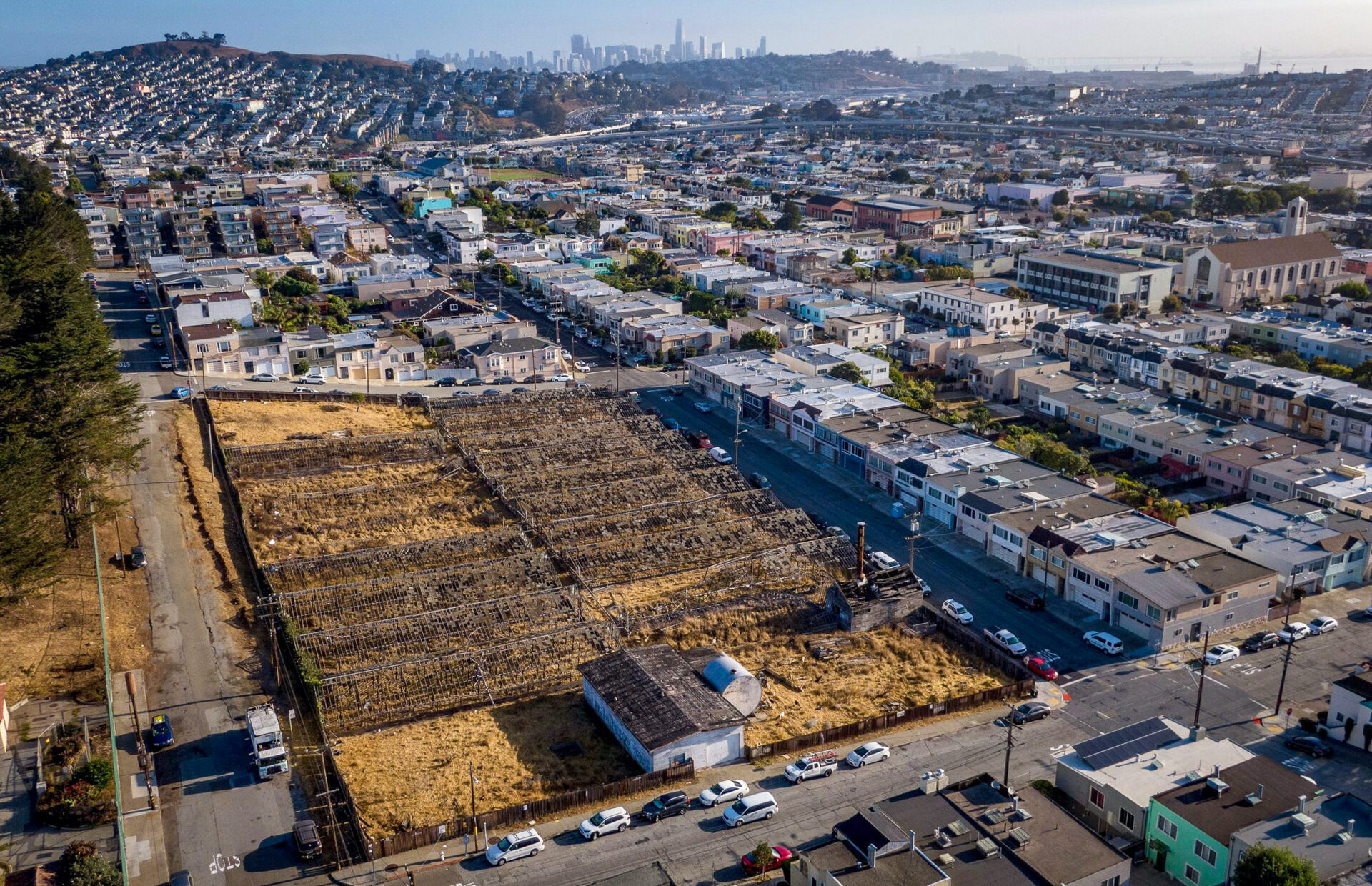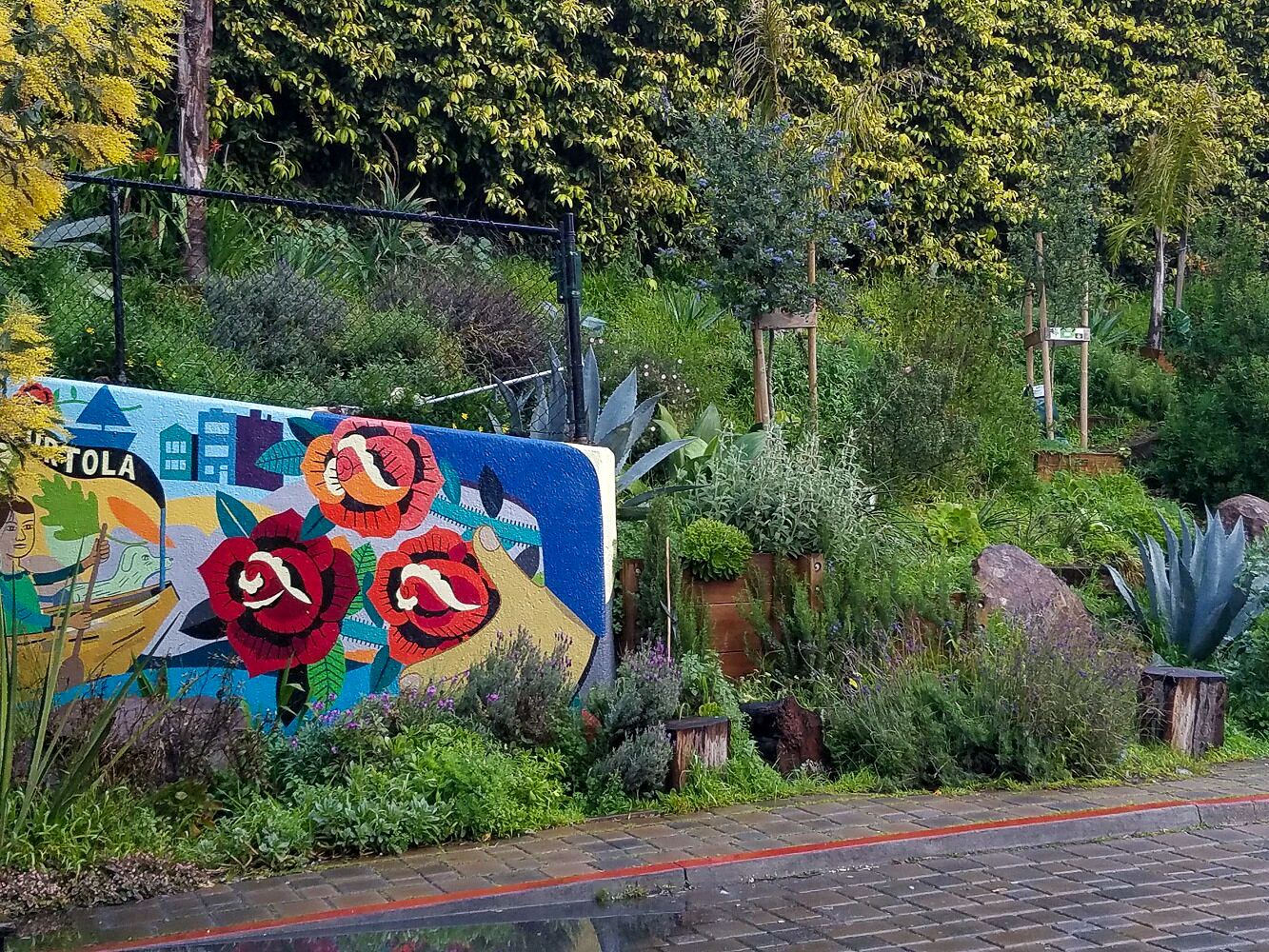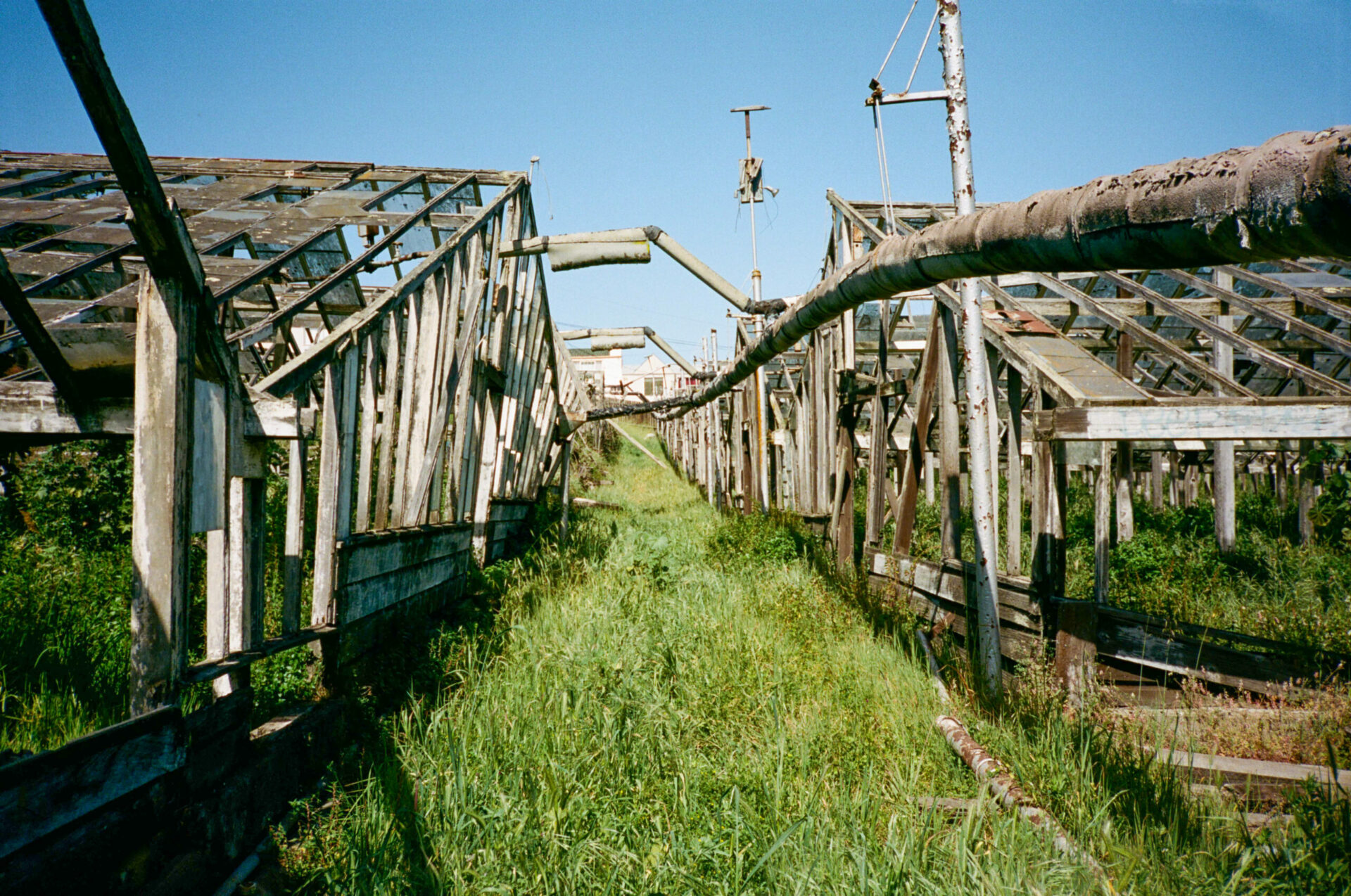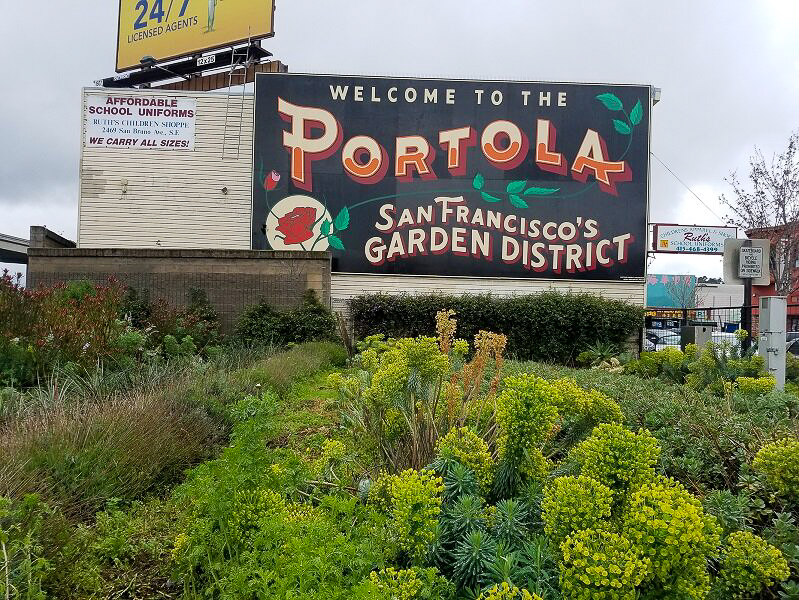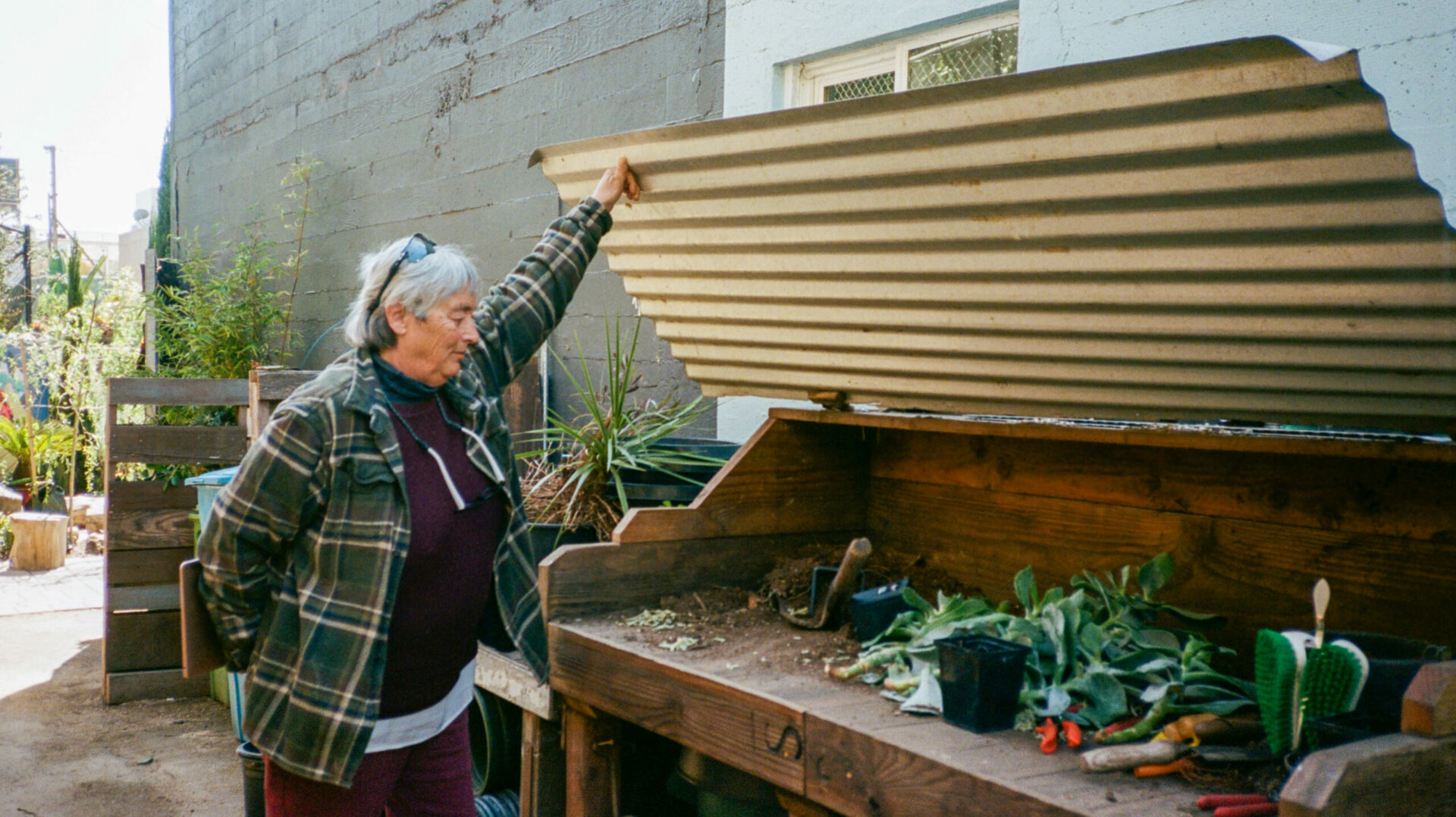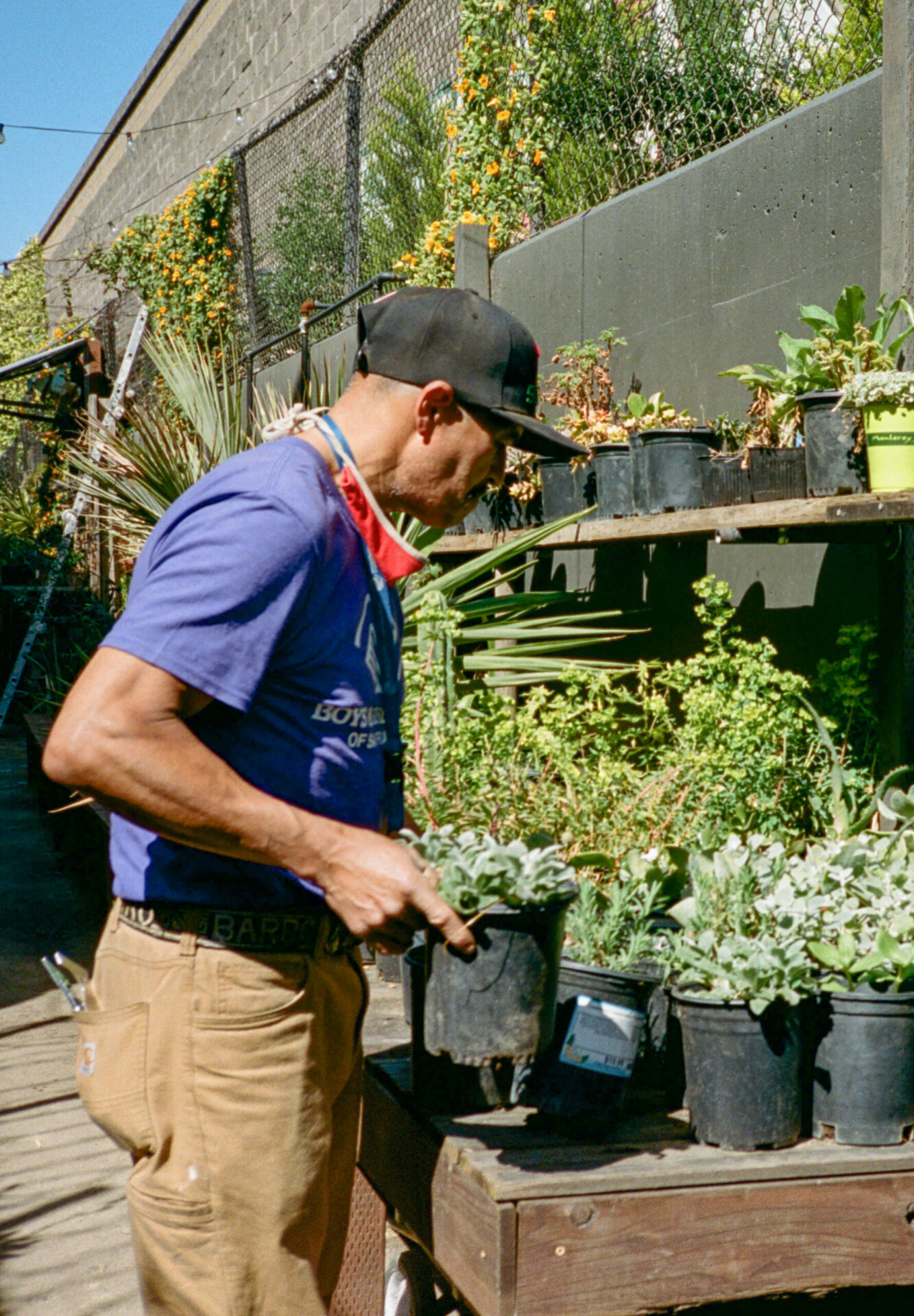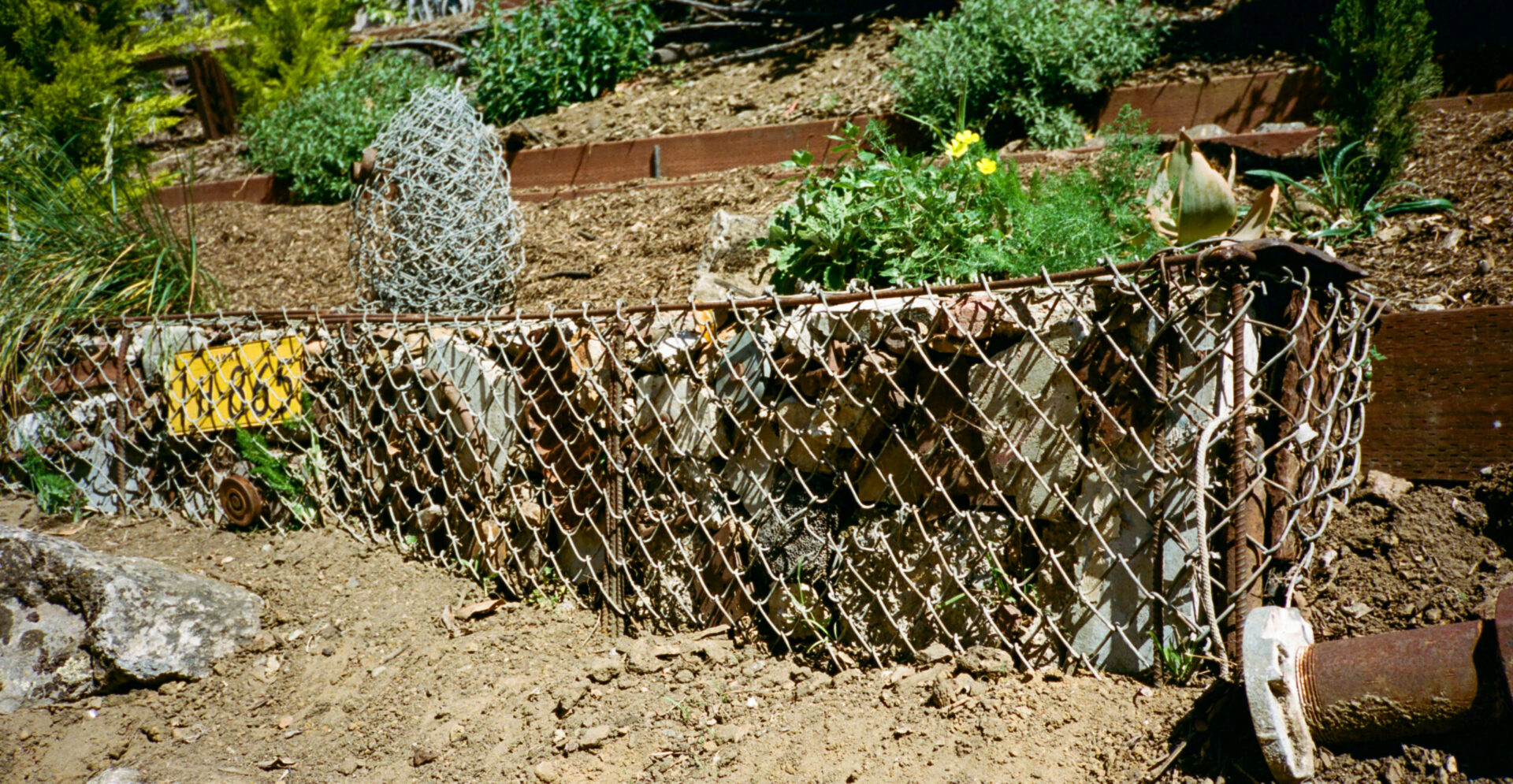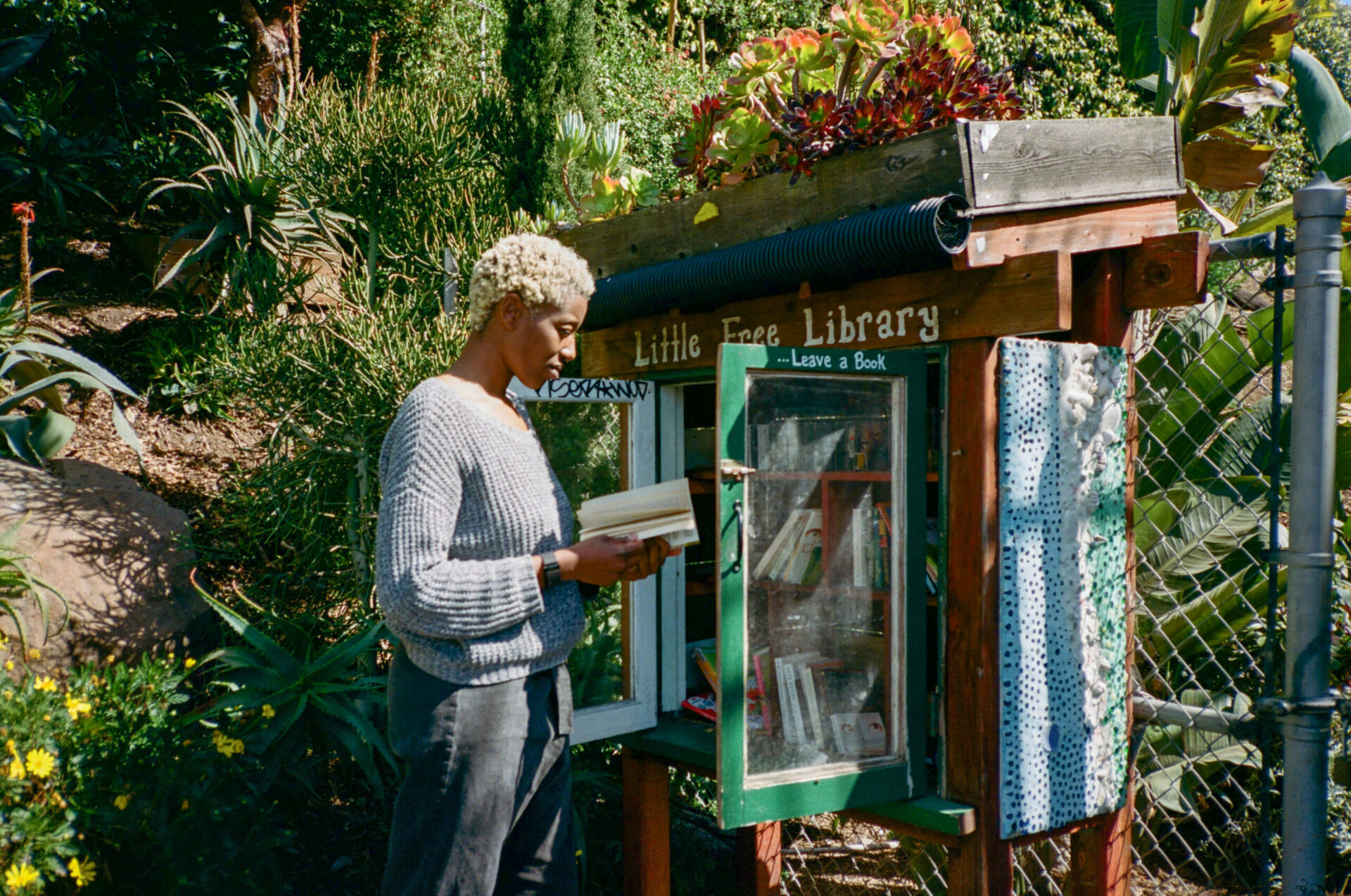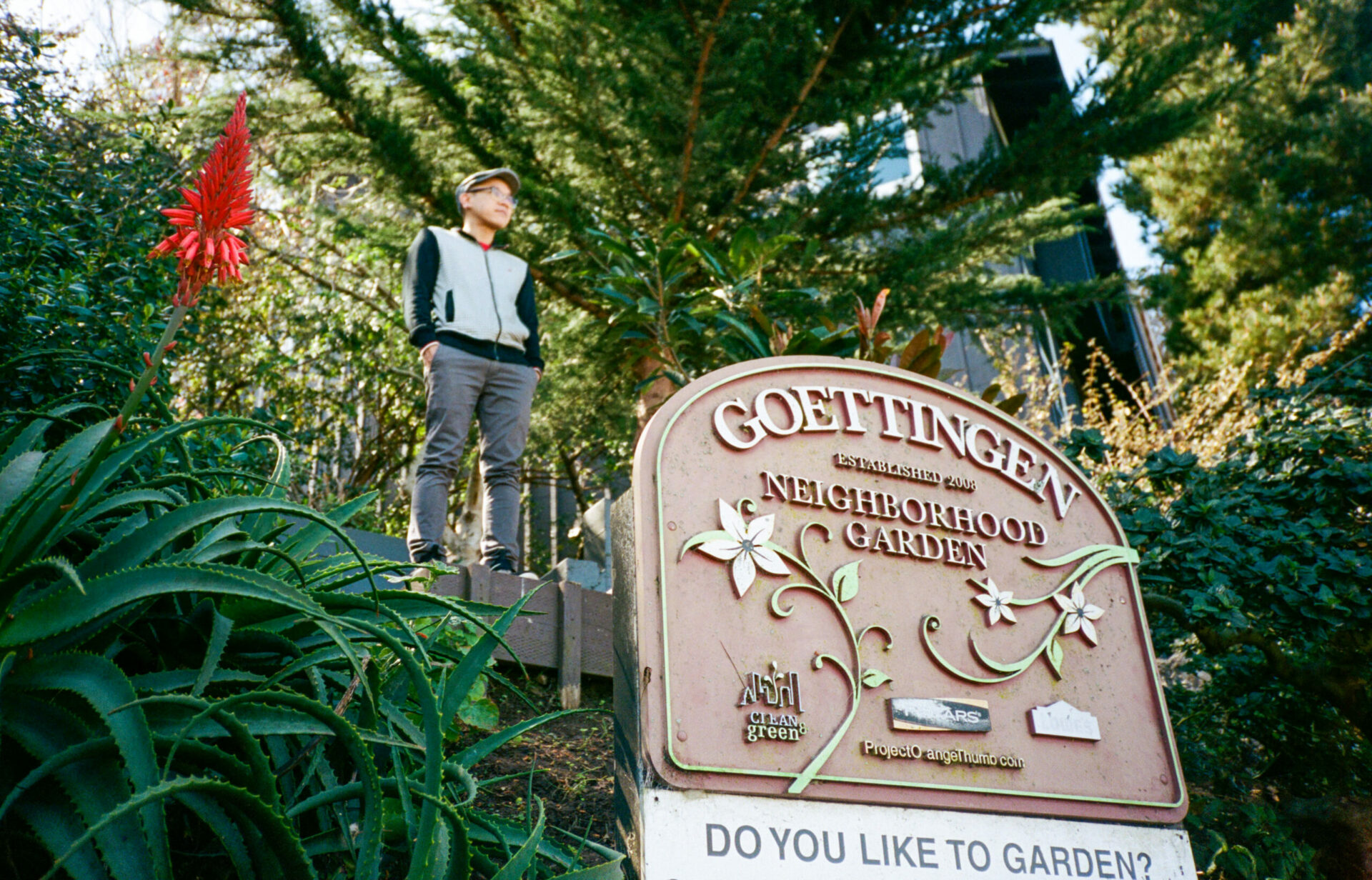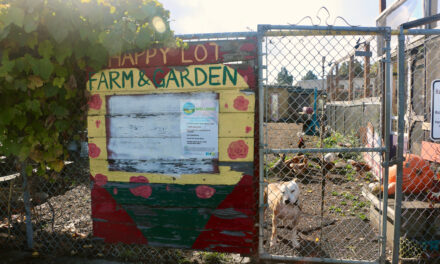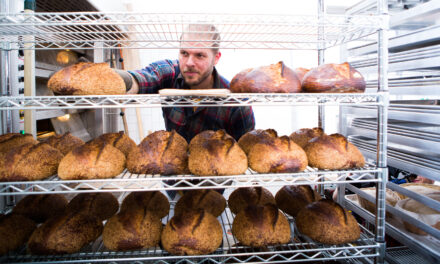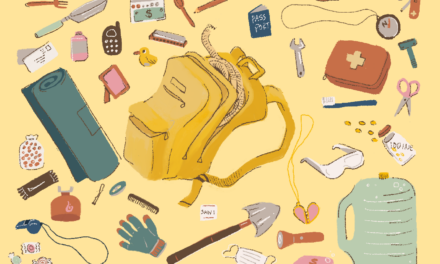Portola Garden District Returns to Its Roots
“Part of the magic is that it’s not a space that should exist…It’s essentially free, buildable land in the most expensive city in the country.”
Down a busy street overflowing with local grocery stores, taquerias, Chinese medicine shops, and various small businesses, an unassuming dead end next to a local coffee shop is home to a thriving community garden that is the unofficial center of the Portola District’s web of nonprofits and neighborhood groups committed to greening the neighborhood.
The dead-end garden is not far from San Bruno Avenue, Portola’s main street in San Francisco. Residential streets jut out to the east of the street, running up tree-lined hills with single-family homes and low-income housing. Many of the residencies have been occupied by the same families for years, even generations, and many house San Francisco lifers who were pushed out of their homes in other neighborhoods due to skyrocketing rent in recent years.
During the pandemic, the Portola community accelerated its greening efforts, and the results have made an impact throughout the neighborhood by helping build both community cohesion and climate resilience. Before COVID-19 hit, for example, the members of the Portola Garden Club would regularly tend to a garden that they landscaped with a mix of native and decorative plants and a wood bridge leading up the hillside. Volunteers added colorful murals and a little free library. But nothing prepared them for the shift that would occur with the pandemic, when they suddenly found themselves with more free time, a desire to be outside, and a heightened need for community and purpose.
“This neighborhood really takes pride in our connection with the land,” says Elisa Laird, a member of the nonprofit Friends of 770 Woolsey that is working with a group called The Greenhouse Project to preserve Portola’s last greenhouses. “Growing things and greening are important here in a way that it’s not in every neighborhood.”
Over the years, the district’s many nonprofits and community groups have even gone so far as to develop a Portola Green Plan, a road map for future greening projects. They also continue to check in on local needs and desires for greenspaces.
“I think in the context of San Francisco being a place where change feels like a big oppressive force, out of any one person or community’s control, it’s really inspiring to see a neighborhood plan so thoughtfully and proactively around the changes they’d like to see,” says Caitlyn Galloway of The Greenhouse Project.
“In a neighborhood like ours that’s so ethnically and economically diverse, a neighborhood that’s really been disadvantaged for many decades, I think it is important to create something where people can break down the barriers and have a place where they can sit and say hello to somebody that they’ve recognized a couple of times,” says Alex Hobbs, a co-director of the Portola Garden Club. “It’s amazing to see these neighbors slowly connecting because it’s just part of their daily routine.”
For Portola resident Phil Hua, an artist whose work addresses the relationship between the environment and the economy, it is inspiring to live in a neighborhood that values green spaces. He is part of a small garden club made up of neighbors that transformed a run-down hill into a garden with benches and stairs. Hua says he particularly enjoys the annual Portola Garden Tour. “Neighbors walk around and essentially explore other neighbors’ gardens to see what’s growing, how they landscape, and get tips on growing food and plants,” he says.
A History of Green Thumbs
The Portola neighborhood, nestled in the southeastern side of the city, is officially known as San Francisco’s Garden District, a name that honors a history of urban farming that goes back to the early 1900s. For thousands of years prior, the land was home to the indigenous Ohlone tribe before Spanish conquerors settled the area. Later, homesteaders began building farms and nurseries. At one point the neighborhood contained approximately 20 functioning commercial farms and greenhouses.
Today, the dilapidated greenhouses at 770 Woolsey, a historic 2.2-acre agricultural site, are the last of their kind in San Francisco. Rose and blackberry bushes grow wild over the broken glass and wood framework, and sprawl out where neat agricultural rows of roses, dahlias, and snapdragons once bloomed.
By the early 1990s, the Woolsey greenhouses were already shuttered and deteriorating. In 2017, a developer bought the site, promising 62 shiny modern condos in their place. But the prospect of destroying the neighborhood’s last connection to the greenhouses drove residents to action. San Francisco is rare in that the opinion of residents actually has an impact on the decisions made by its Planning Department, Laird says.
The greenhouses became a community totem for what gentrification should and shouldn’t be. A small, dedicated group formed one organization that with time spawned a second with a shared goal: to preserve the greenhouses and preserve the history of the neighborhood.
During the years prior to the pandemic, The Greenhouse Project and Friends of 770 Woolsey regularly reserved a room in the local recreation center to hold community meetings and organize their effort. The meetings attracted upwards of 100 people. Whenever the developers went to the City with a new request regarding the site, dozens of Portola residents would turn up at the hearing, armed with facts and personal testimonies.
“To tear down the last piece of that history feels like a wound to the city,” emphasizes Laird. An attorney who grew up among her father’s greenhouses, Laird finds the community response exhilarating, sentiments echoed by everyone involved.
In 2021, after extended negotiation and campaigning, The Greenhouse Project and Friends of 770 Woolsey won the legal right to purchase the property as nonprofits for $8.5 million. District Supervisor Hillary Ronen brokered the deal. “To have a working farm in the middle of San Francisco’s garden district is a pretty wonderful opportunity,” Ronen told the San Francisco Chronicle. “We are not talking about [losing] that much housing, and…you need other amenities to make a neighborhood beautiful and unique,” she said.
Now in the final leg of their fundraising campaign, the nonprofits need to secure the full amount of money by July. If they don’t succeed, the developers have agreed to preserve a small fraction of the greenhouses, consult with the nonprofits, and pay for the project out of their own pocket.
But if the nonprofits succeed, their plans for what to do with the property will be developed by the larger community. They envision outdoor food production, indoor greenhouse production, a commercial kitchen, and a multipurpose community space for events, food distribution, gatherings, and education.
“So many cultures have their own relationships, ancestral relationships, with food production, earth, and soil,” says Galloway. She sees the project as a way to hold space for these ideas: “This knowledge lives among us, lives in the city.”
A Garden Club Creating a Greener Future
Working parallel to the greenhouse efforts, and armed with a similar ethos of preserving and restoring green spaces in the neighborhood, another group, the Portola Garden Club, has been fundamental in bringing Portola back to its roots.
The club is a branch of the Portola Neighborhood Association that developed naturally after the association received a grant from the city to clean up an abandoned lot next to a coffee shop. The lot, Caltrans property, had devolved into an unofficial junkyard for the neighboring businesses and the pollution runoff from the highway on the other side of the fence. Years of neglect left a space mostly marked by garbage and towering weeds.
As volunteers began to clear out the space known as Burrows Pocket Park, the potential started to reveal itself. At first the growth was gradual. Volunteers removed weeds, hauled away truckloads of junk (including old washing machines and plumbing), and laid out mulch.
In the past two years, the garden has grown beyond anything the volunteers could have imagined. And it keeps growing. Portola residents Alex Hobbs, Angie Matt, Paul Alaga, Maggie Weis, and Ryan Hill make up the core. Volunteer Raul Romero shows up almost daily to tend to the garden and take on labor-intensive landscaping jobs. Community gardening days yield upwards of 40 people from around the area.
The garden now boasts an amphitheater, a propagation station, and a large workspace. It has also expanded into other blocks, alleyways, and parallel streets. The Burrows pocket garden now only makes up a fraction of the entire project, much of which is invisible from the street.
“I think part of the magic is that it’s not a space that should exist,” says Garden Club co-director Alex Hobbs, an interior designer and architect by day. “You turn a corner at what appears to be a dead end with a 20-foot-tall wall and you’re like, ‘Oh, my God, there’s this whole world.’ It’s essentially free, buildable land in the most expensive city in the country.”
Hobbs attributes the garden’s success to the strong core group of volunteers including Raul who shows up almost every day. “We met Raul while cutting down all the overgrowth behind the coffee shop. We just came around a corner and saw someone else clearing in the other direction for us. Raul’s backyard butts up to the space. We literally met him back there with the same goal in mind,” Hobbs says.
Volunteer Angie Matt regularly puts in 40 hours a week both woodworking and tending the garden’s propagation center. “I built tables out of upcycled pallets and fence boards from the neighborhood,” she says. “There’s a potting bench back there that I built out of [old stairs] that some guy gave me when he was moving. I drive by construction sites and ask if I can go through their dumpster. I’m a pirate. I find stuff that people are throwing away that still has a life in it.”
Matt is a self-taught woodworker. Two of her brothers work in construction and often offer advice. But some of her ideas are unique, like the 110 feet of retaining wall she built out of metal scraps including license plates, chains, and tools. She made it up as she went along, she says.
Raul Romero at work. Photo: Meka Boyle.
In the future, the Portola Garden Club plans to host educational workshops as well as concerts, pop-up markets, and local events. Resident Ryan Hill is building a beehive on one of the upper levels of the garden, a young local artist is painting a large mural, and another is building large metal gates from old, recycled tools. The club has even teamed up with a nonprofit child-care center around the corner to build an extension of the garden for the children’s after-school program.
Putting the Community into Community Gardening
Word of the garden continues to grow. The number of volunteers has more than doubled in the last year alone. Last month’s community workday attracted about 40 volunteers, many of them first-timers.
Throngs regularly show up to Hey Neighbor Coffee, a local coffee shop, inquiring about the Burrows Pocket Garden and its extensions. The shop’s owner, Dee Derisse, in many ways the unofficial ambassador of the Portola Garden Club, often walks customers and passersby through the garden, giving impromptu tours.
“When you give people that personal touch where they can see, feel, and smell all these things, it’s a bit more tangible than sending out a volunteer newsletter,” says Derisse. “I see them come back on neighborhood work days and think, ‘Hey, I walked you through the garden a few weeks ago, that’s awesome.’”
Co-director Paul Alaga joined the Garden Club in 2020 after he moved to the neighborhood. After finishing up a vigorous first work day, Alaga stayed and got to know his new neighbors under a canopy of vines. “I learned that these feral grapevines grew from scraps of food thrown out by the old restaurants,” said Alaga. Hooked by the regenerative nature of the garden and the warm welcome of its volunteers, Alaga kept returning.
Local high school students have also joined in to help with the manual labor. Maggie Weis, a club co-director, taught P.E. for 19 years and was the lower school head for 12 years at San Francisco School. When the father of one of her former students, Rowan, whom she coached in basketball, told her that his son needed to complete 40 hours of community service, she recommended he come help at the garden.
“He rallied other students [in his high school]. And we had a steady crew of 10 sophomores who were delighted to get out of the house during COVID. And they’re still coming this year. Rowan shows up almost weekly,” says Weis.
Seven blocks away from Burrows Street, another group of neighbors are transforming a rundown eyesore of a hill at the end of Goettingen and Dwight streets. The Goettingen Neighbors Group meets every month to landscape the garden, maintain the hill, and plan for future projects.
Right now the group is in the middle of fundraising for a new staircase of tiles by artist Phil Hua. Hua is embedding the stairs with personal messages and words of wisdom sourced from his neighbors. “It’s a community for sure,” he says. “And, you know, we want to help other groups because that also means they help us and it’s just very symbiotic.”
Derisse has also noticed a more diverse demographic of people coming through the garden: “For a while I hadn’t seen a lot of Black farmers and now I am seeing them pop up and that is really special. I’m particularly excited about bringing the Bayview and Portola together because there is some deep history there with the neighborhoods being split by a redline at the highway.” Reconnecting the two neighborhoods through a joint appreciation of green space “feels like a movement or cultural shift that we desperately need to get back to,” Derisse says.
Climate Resilience in Community Gardens
Kelly Torres, who was integral to starting the Burrows Pocket Garden during her time as the Portola Neighborhood Association’s green plan coordinator, is now involved in a handful of other greening projects on undeveloped land nestled between residential homes throughout Portola. She also collaborates with teachers and students at nearby local schools to develop community garden programs.
Portola’s location between two highways positions it perfectly to contribute to the city’s climate resilience, says Torres. However, many of the empty spaces the neighbors are gardening on are at risk of development. The community needs bigger, permanent spaces to develop gardens, she says: “Larger parcels are needed if we want to make a solid effort in combating climate change, which could therefore increase personal resilience.”
As gentrification and development push urban vegetation and green spaces to the brink of vanishing, community gardens offer a tangible and immediate reprieve. Gardens and trees provide shade, and reduce urban heat islands. They open up the soil to receive rain and absorb stormwater. They offer a viable source of local food and add diversity to the urban ecosystem through native and drought-resistant plants. And they act as an entry point for residents to care about the environment and connect with their neighbors around urban resilience and health.
“The green spaces in the Portola should not only contribute to our climate resilience, but also be planned spaces that support our native fauna: the butterflies, bees, birds, bats and gnats we all depend on to pollinate the crops we grow in our backyards, our community gardens and our urban farms,” Torres says. “Investing in vegetation our indigenous pollinators depend on will increase their numbers and give them reliable food resources.”
Hobb advises people interested in starting their own garden clubs and infill parks to locate public land that is not buildable and therefore not contentious: “Contact whoever owns the land to let them know you want to work on it. Tell them they don’t need to maintain it. So as long as you’re keeping an eye on things and keeping it from being overgrown, it’s a win-win for the city.”






